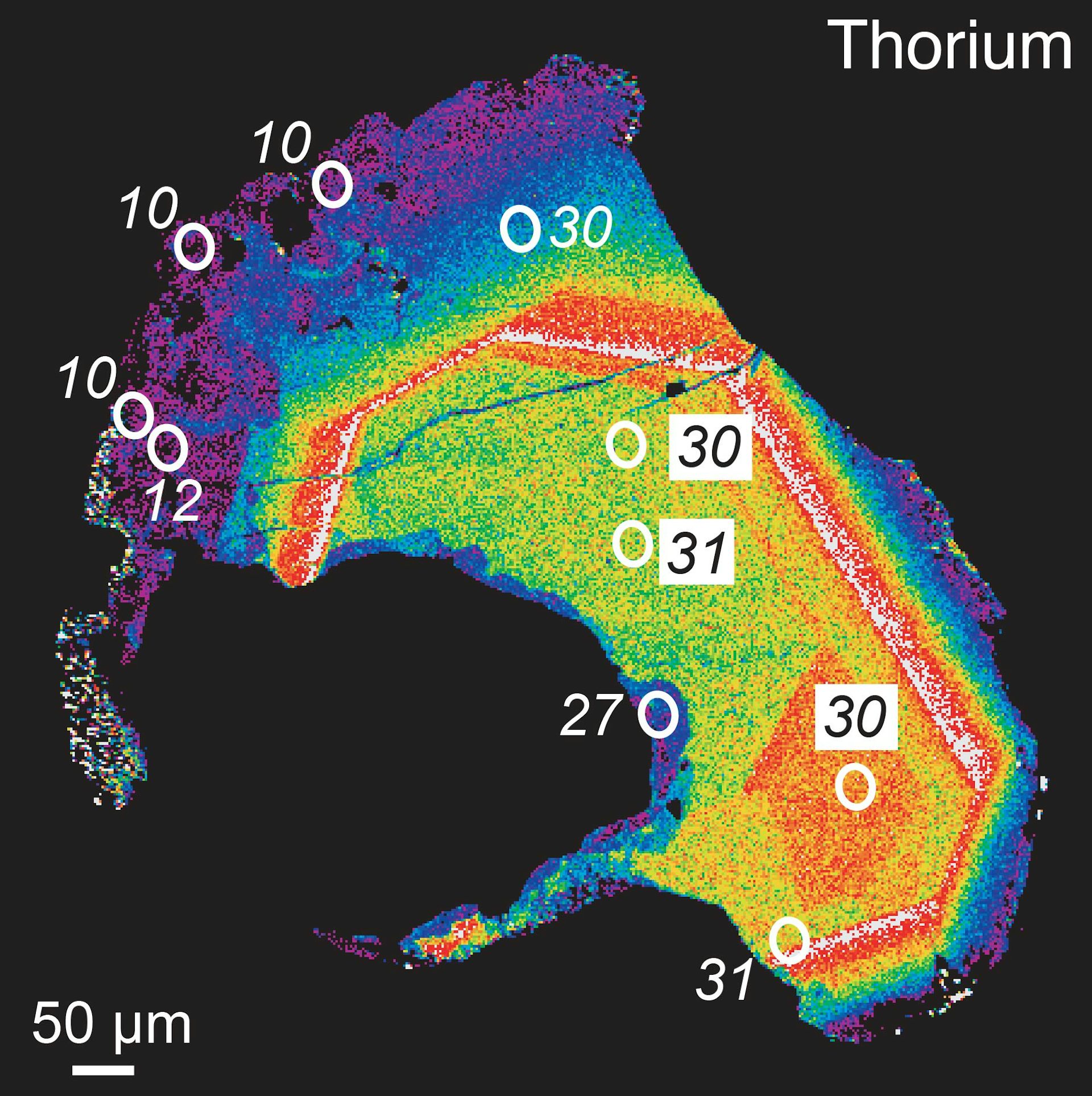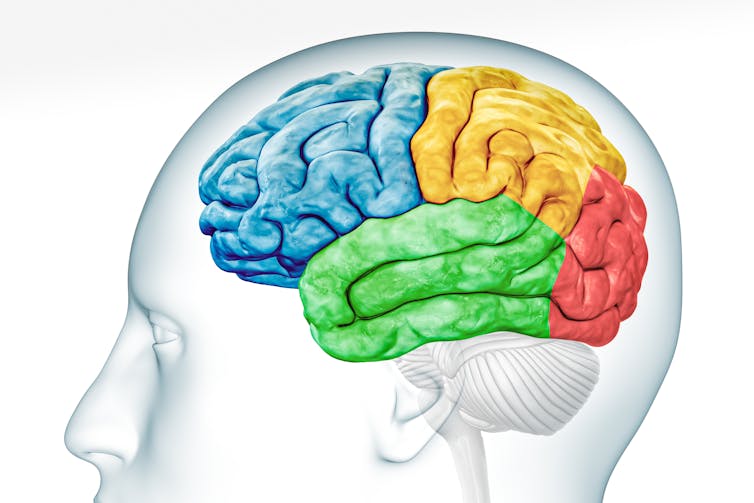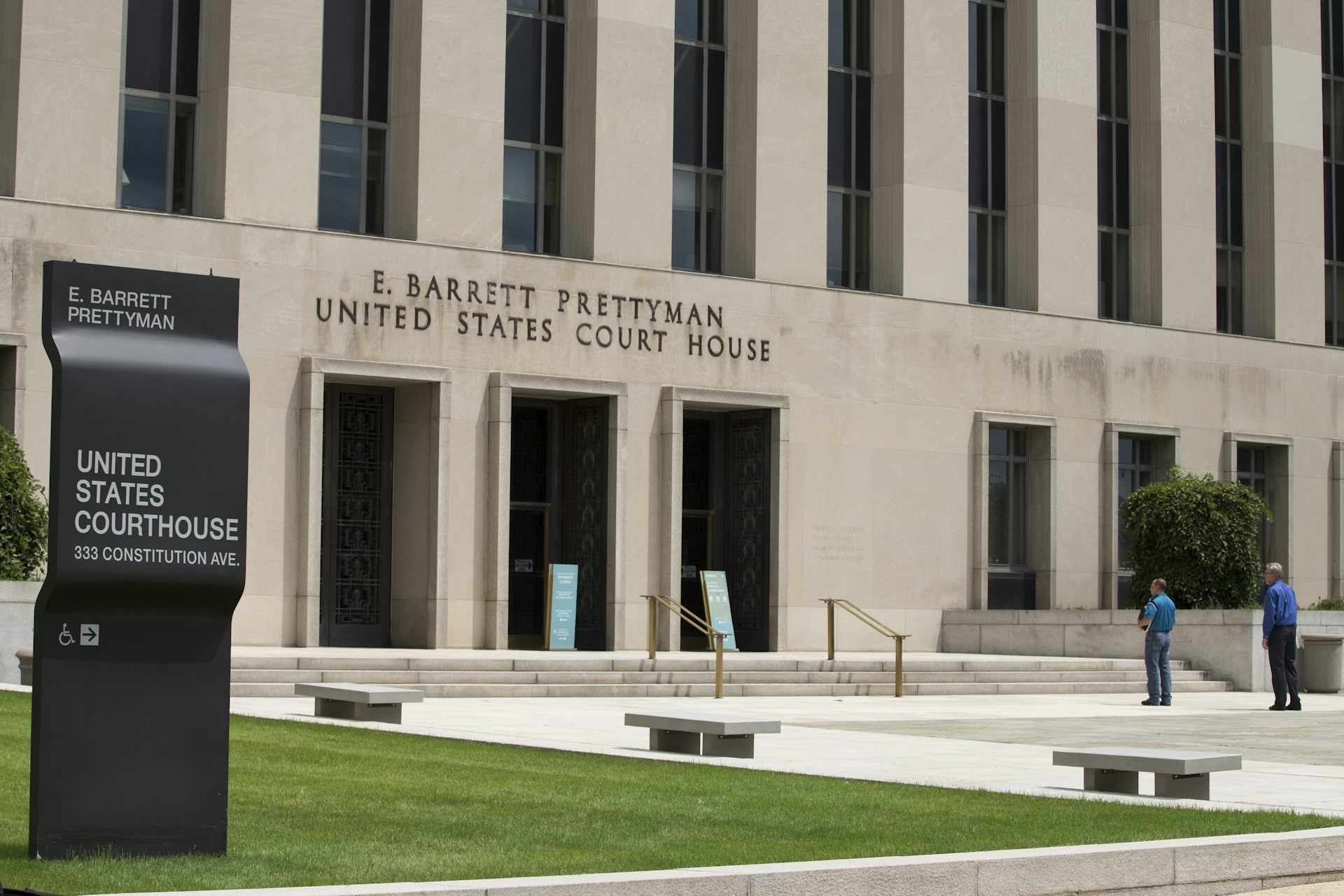Dads have stepped up to do more hands-on parenting over the past few decades.
Darby Saxbe, USC Dornsife College of Letters, Arts and Sciences
Parenting makes the heart grow fonder, and the brain grow … smaller? Several studies have revealed that the brain loses volume across the transition to parenthood. But researchers like me are still figuring out what these changes mean for parents.
In a new study that looked at brain change in first-time fathers, my colleagues and I found that brain volume loss was linked with more engagement in parenting but also more sleep problems and mental health symptoms. These results might point to a cost of caregiving, traditionally shouldered by women but increasingly borne by men also.
Brain changes for mom come with new baby
Caring for an infant demands new motivations and skills, so it is no surprise that it might also sculpt the brain. Research in rodents first identified remodeling of both the structure and function of the brain during pregnancy and parenthood. A new body of research is unearthing similar effects in human parents, too.
In a pair of studies, researchers recruited first-time mothers for a brain scan that occurred before they became pregnant and then scanned them again a few months after birth. Gray matter – the layer of brain tissue that contains neuronal cell bodies – shrank in the mothers but not in a comparison group of women who did not become mothers.
Although a shrinking brain sounds bad, researchers theorized that this more streamlined brain could be adaptive, helping process social information more efficiently and therefore facilitating sensitive caregiving. In keeping with this hypothesis, studies have linked maternal brain changes with women's degree of attachment to infants and with their responses to images of their infants. Women who lost more gray matter volume also appeared more bonded with their babies.
New dads' brains change, too
Most studies of the parental brain have focused on women, but emerging evidence suggests that similar brain changes might occur in new fathers, too. My collaborators and I had previously identified brain volume loss in men transitioning to fatherhood, in similar parts of the brain that changed in mothers.
Before you picture the shrunken-head guy from the movie “Beetlejuice,” keep in mind that these changes were subtle. Fathers showed smaller, less statistically significant brain changes than mothers.
Dads vary in how invested they are in caring for the baby, so as a next step, we wanted to know how men's brain changes across the transition to fatherhood map onto their experiences of new parenthood.
To test this question, we looked more closely at 38 men we scanned in California before and after their baby's birth. During pregnancy and again at three, six and 12 months postpartum, we asked the fathers how they were feeling about their infants and how well they were sleeping. We also asked about their symptoms of depression, anxiety or other mental health problems.
As before, we saw significant prenatal-to-postpartum brain differences across the entire cortex, the outermost layer of the brain that carries out many higher-order functions, such as language, memory, problem-solving and decision-making. On average, men in our sample lost about 1% of their gray matter volume across the transition to parenthood.
Consistent with the research on mothers, men's brain volume reductions did indeed seem to track with their parenting. If men told us during pregnancy that they wanted to take more time off from work after the birth, and felt more bonded to their unborn child, they subsequently lost more gray matter volume, especially in the frontal and parietal lobes – parts of the brain involved in executive functioning and sensorimotor processing, respectively.
Engaged fathers lost more brain volume in the frontal lobe, colored blue, and parietal lobe, colored yellow.
Greater volume loss also emerged among fathers who told us that they spent more time with their infants at three months postpartum, took more pleasure in interacting with their infants and experienced less parenting stress. Taken together, our results dovetailed with the prior studies of mothers and suggested that more motivated, hands-on fathers lost more gray matter volume across their transition to parenthood.
The plot thickened when we looked at mental health and sleep quality. Men who lost more brain volume also reported greater depression, anxiety, general psychological distress and worse sleep at both six and 12 months after birth. These results held up when we controlled for the same measures during pregnancy.
This finding provides a clue to a possible direction of causality: Rather than prenatal sleep problems or psychological distress predicting greater brain change, we found instead that fathers' gray matter volume loss preceded their postpartum sleep problems and mental health, above the effect of their well-being before birth.
Parenting comes with highs and lows
Importantly, this research is preliminary: We had a small sample of fathers who were willing to participate in our intensive research study. These results need to be replicated in larger and more representative groups of fathers.
Still, as one of the first longitudinal studies of male brain changes across the transition to first-time parenthood, our findings illustrate that perinatal brain changes may reflect both adaptation and vulnerability. The very same changes linked with fathers' greater investment in caregiving also seemed to heighten their risk of sleep trouble and mental health problems.
Life with a baby can be tough.
As any new parent will tell you, caring for an infant is a challenge. Becoming a parent forces a realignment of life priorities and can bring magic and meaning to everyday life. But parenting can also be dull, repetitive, lonely and draining.
Perhaps our findings in fathers point to a cost of caregiving, a burden that has long been familiar to mothers but may be increasingly shared by men as fathers step up their participation in hands-on parenting.
The take-home message here is not that men should stop caring for children. A slew of research suggests that children with involved fathers do better across the board: academically, economically and emotionally. And fathers themselves report that parenthood makes their lives richer and more meaningful.
Instead, results like these support public health priorities that invest in fathers – and parents in general – through policies that reduce stress for new parents in the first months after birth, such as paid leave and workplace efforts to normalize leave-taking among men.
Darby Saxbe, Professor of Psychology, USC Dornsife College of Letters, Arts and Sciences
This article is republished from The Conversation under a Creative Commons license. Read the original article.
















































